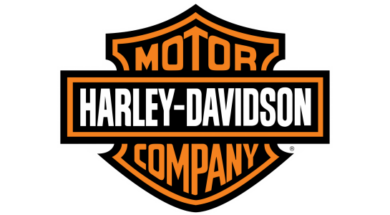$1 million cost of non-strategy
 What is the cost of not having a clear marketing strategy, and how does it impact your business, whether you’re a brand or retailer? I’ve estimated costs here, but the goal of this article is to make you think about what it means to your bottom line. The common response I get when I ask brands or retailers what type of woman they’re targeting is, “All women use my products, so we don’t want to limit to just one type.” I pause and respond with a smile, “Wow, you must have a giant marketing budget to be able to effectively attract and sell to all women!”
What is the cost of not having a clear marketing strategy, and how does it impact your business, whether you’re a brand or retailer? I’ve estimated costs here, but the goal of this article is to make you think about what it means to your bottom line. The common response I get when I ask brands or retailers what type of woman they’re targeting is, “All women use my products, so we don’t want to limit to just one type.” I pause and respond with a smile, “Wow, you must have a giant marketing budget to be able to effectively attract and sell to all women!”
Then, I provide examples of how brands like Chevrolet are strategic and create target audience profiles for different models. The woman buying a Silverado is not the same as the Volt, wouldn’t you agree? Their staff and retailers are clear on the branding, messaging and most effective avenues to attract each type. Can you say the same?
In past articles, I’ve provided tips about strategies and execution for certain types, like Girls with Grit. As you go into the fall, this is the time to think about 2015. Ask your staff — and yourself — some tough questions. Then focus on the right strategy and audience for your business.
$1M cost to brands
How much does it cost to develop, launch and market a product? Let’s start with the biggest bucket of dough, product development. Consider time for designers, engineers and others involved in the early stages just getting to a working prototype. Let’s guess five people dedicated for two years at $75,000/year salary = $750,000!
Then, you enjoy hours of launch meetings with marketing, sales and other areas. I’d estimate $50,000 in hours invested between dozens of people in multiple areas. But the real costs here are organizational misbehavior. Lack of clarity breeds contemptuous conversations and more time trying to “prove a point” than integrating on a campaign.
How about actual marketing costs: photo shoots, copywriting, design work on a brochure, website, event displays, online / print collateral, ads placed? I’m putting $100,000 as a low estimate for that.
Then the retail component: in-store packaging, retailer training, online selling backend and many other areas. Let’s put $100,000 down for both hard and soft costs (employee and agency hours).
That totals up to $1 million, and doesn’t even include cost of materials for the actual product. Does it sound crazy to invest that much in a product without a clear strategy on the target audience? It happens. The kicker is that if your product flops, you can’t put a number on your loss of credibility with retailers. Their lack of confidence makes both owners and employees doubt your efforts in the future. Eventually, they’ll stop selling your products.
Retailer costs add up
For the non-strategy costs on retail, I’m separating those from the above. What costs can you control as a retailer?
Let’s start with your marketing staff. Assuming that’s $50,000/year for at least one marketing person, perhaps more if you’re a larger dealer, all of this is wasted if she or he is not being effective and efficient with your marketing plan.
What about actual marketing development and execution costs for events, ads, agencies? Let’s estimate a total of $100,000, but you know your actual number here, right? And remember the soft costs of time spent of all employees involved in marketing activities. If you sponsor an event for $5,000, your investment is probably double that in the end, with the planning, execution hours and marketing collateral.
If you think your marketing budget with staff, development and execution is only $150,000, because that’s the line item on your annual P&L statement, think again. What is your total investment in marketing, service, sales and other staff hours with marketing campaigns? Maybe double that? And what else have I missed that should be considered?
It’s tough to gauge lost opportunity costs when customers bypass you and buy at another retailer, but you know that happens. And you also have the loss of credibility with staff when your marketing fails to bring in new customers or even get your current ones back in the store.
What can you do?
Learn more about marketing strategy by taking a course, reading articles and books, bringing in an expert and keeping an eye on your competition. Ask questions. Track the ROI of your marketing efforts.
Do research and ask your brand partners for help. Most of you have district managers. If they can’t answer your questions about putting together a strategic marketing plan, take it up a level and find someone else at that company — or another one — who can. They know your success is crucial to theirs.
A rider for 25 years, Leslie spent 15 years with Harley-Davidson (three retail, 12 corporate) and created their marketing to women role in 2007. She spearheaded Women Riders Month and a Garage Party Campaign that drove 25,000 women to dealers. After two years at Trek Bicycles, Leslie now helps companies be strategic with their marketing. She’ll be speaking at the Powersports Business Institute @ AIMExpo about attracting women, Hispanics and youth. To register for AIMExpo, click here.
Contact: leslie@previshmarketing.com
Website: www.previshmarketing.com








